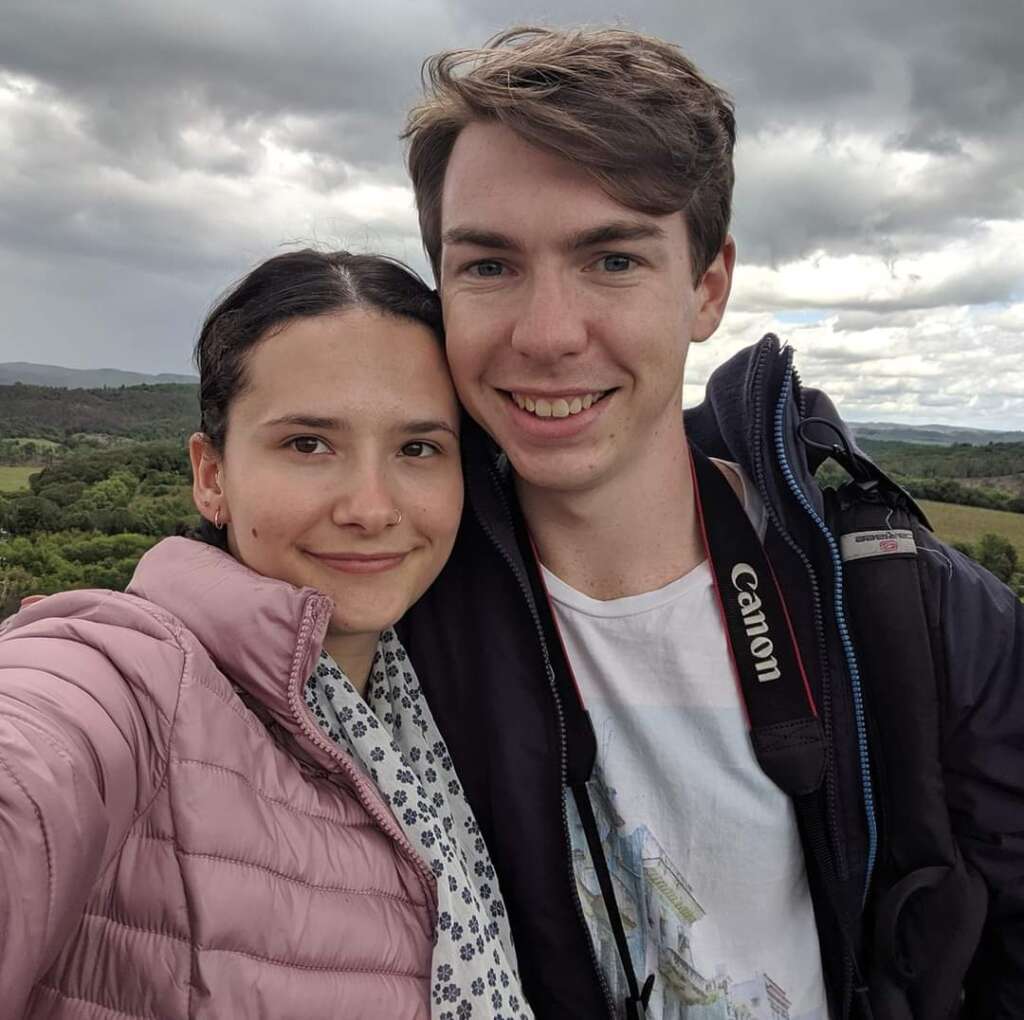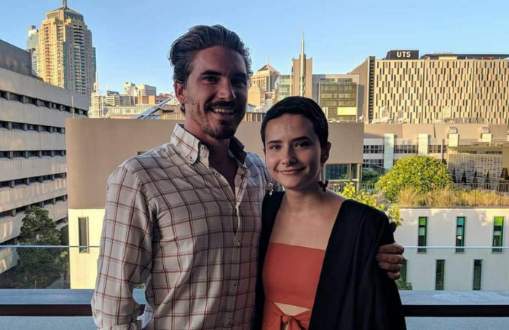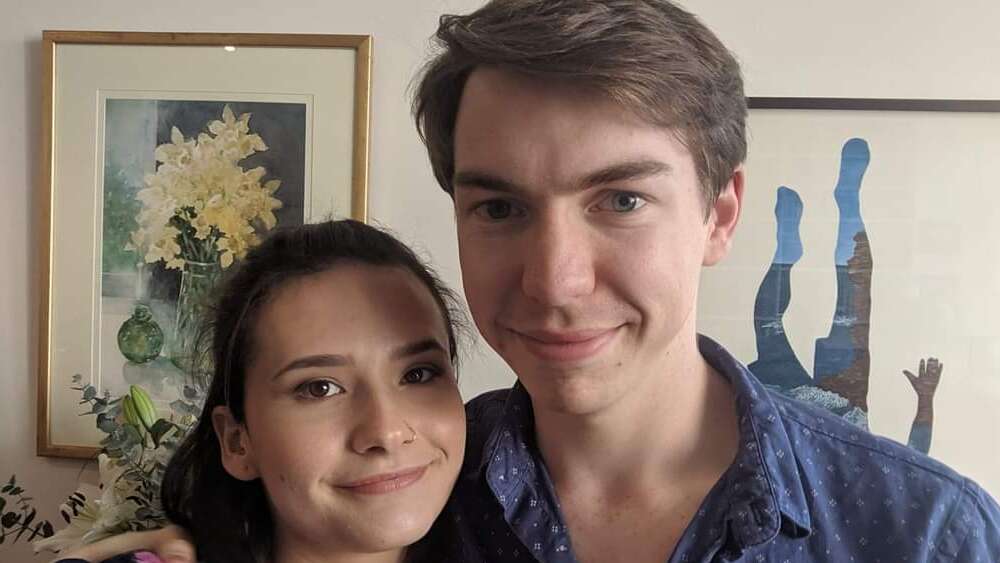Warning: This article refers to trauma from an unhealthy sexual relationship.
For the first year and a half of her married life, Connie Kelly could hardly stand to have her husband touch her. Though she loved him dearly, she would flinch at his loving caress.
Even though Connie never watched pornography, she bore the mental scars from having been in a relationship with a man who was addicted to porn and made her do things she was not comfortable with.
“When I married Alex and the relationship got physical, it was really hard for me because I still had this kind of trauma from my previous relationship,” she tells Eternity.
“He would touch me in a certain spot, and I would flinch because I would just feel this insane PTSD.”
Connie gradually overcame her trauma by looking deeply into God’s word and his plan for intimacy.
“I realised that whenever Alex would touch me, it wasn’t in a malicious or domineering way or anything like that. It was purely out of love and kind of the way that God loves me,” she says.
“It took me a long time to shift my mindset to be able to be completely honest with him, communicate, and pray together. We’re able to now be in the space of ‘This is the way it is meant to be and the way that it should have been from the beginning,’ removing that corruption and the trauma of what the world did to me.”
Connie is just one of the millions of young people growing up without a secure sense of what is normal in sexual relationships. The situation has prompted Youth for Christ to launch a new program called What’s Normal. It’s a ten-session Christian resource for youth and young adults to help start meaningful conversations around the sexualised culture they must navigate and challenge them to think about what they accept as normal.
Connie’s story is one of the compelling testimonies on video that have become part of the course.
Orphaned at age 17, and becoming the caretaker for her younger brother, Connie found herself trapped in an unhealthy sexual relationship which brought her a lot of pain.
“I just saw this light in PJ and this happiness and this peace, and as soon as I saw that, I was like, ‘Oh, I’m going to go to this bonfire.’” – Connie Kelly
Then in December 2015, when she had just turned 18, there was a knock at her door in Helensburgh, south of Sydney, and it was PJ, one of the pastors from the local Hope Church just around the corner.
“This is my favourite part of the story,” confides Connie.
PJ invited Connie to a New Year’s Eve bonfire, and even though she had no idea who he was, she was attracted to his inner light.
“I didn’t know what it was at the time, but now I know that it was the Holy Spirit. I just saw this light in PJ and this happiness and this peace, and as soon as I saw that, I was like, ‘Oh, I’m going to go to this bonfire.’
“And it was super weird because I didn’t know this 30-something-year-old guy knocking on my door, but I was really drawn, which I now know is Jesus living inside him. I ended up going to that bonfire and it honestly was probably one of the best nights of my life. It was so much fun.”
After school resumed in 2016, Connie kept in touch with the young people she had met that night and started to attend the church youth group and eventually the church services.
In her new milieu, Connie realised that the culture of pornography she was enduring with her boyfriend was not normal at all.
“Being around PJ and a lot of the other guys, I just realised this actually wasn’t okay. That forced me to re-evaluate because, obviously, the way that Christians live is so different to the way that I’m living. I still wasn’t technically a Christian at that point, but I realised that I don’t want anything to do with what the world has to offer because all I’ve gotten from it is brokenness, is hurt, is pain and suffering. I’m being told that this is normal, but then I have all of these new Christian friends that are telling me, ‘No, that’s not normal. There’s so much more to it.’ And so from that point, it was like, “OK, this is the way that I want to go and this is the way that I want to turn.”

Connie and Alex
It took Connie a while to say the sinner’s prayer because she still felt a lot of hurt from God having let her mother die of cancer. But once she did, the turnaround in her life was dramatic.
PJ Bedwell, who came to faith ten years ago from drug rehabilitation, comments that it’s very rare to come across non-Christian teenagers and 20-somethings who are not experiencing the pressure and impact of pornography. But even in youth group and church, there are young people – predominantly guys – being saved who are “completely sexually broken and need rewiring.”
“Many of us are like that – I was like that,” confesses PJ.
He says the overriding message from the panel discussions that led to the What’s Normal course was a lack of healthy sex education.
“All the under-20 shared ‘I wish somebody had talked to me about sex’. Time and time and time and time and time again, the universal story is ‘Nobody spoke to me.’ So then we blame young people for going and finding out their information from gross secular sources. But they need an alternative.”

PJ and Connie
While the primary emphasis is on healthy sex – avoiding pornography and sending nude pictures – the course also addresses remedies for screen addiction, bullying and mental illness, and body image.
“If porn is not an issue for you, how do you transform a culture that lives this way and looks this way?” – PJ Bedwell
The course is tailored for youth groups, Christian schools and young adult ministries, and Youth for Christ also sees it as a cultural catalyst.
“So if porn is not an issue for you, how do you transform a culture that lives this way and looks this way? And what’s your role in taking it forward? Do we have to accept the cultural narrative of the day? And what are we allowed to question?”
“At Youth for Christ, we are overtly Christian. We recognise there are other people in the harm minimisation space and we think it’s important, but our little lane is that the only solution that we see is the gospel.”
PJ says the course moves away from the do-not lists from Scripture and acts as a springboard for regular and ongoing discussions about what’s normal.
“The point is people need to understand God’s beautiful plan for sexuality, for everything from a little beautiful baby to the safety of being in a covenant with somebody in your most vulnerable place, that as you work out things – not just sexuality, but as you work out life, you’re safe enough with them to be absolutely vulnerable. And you know that in two weeks’ time, you’ll still be with them, waking up next to them. How could you even soften your heart to someone if you’re just terrified that they’re on the phone to somebody else, that you’ll be replaced? That’s dreadful to a young heart. You’ve got to talk about God’s true plan for sexuality. It’s a beautiful thing. It’s covered really well in What’s Normal, talking about why God made it this way. And he did a good thing.”
The resource is available on whatsnormal.org.au
Email This Story
Why not send this to a friend?




